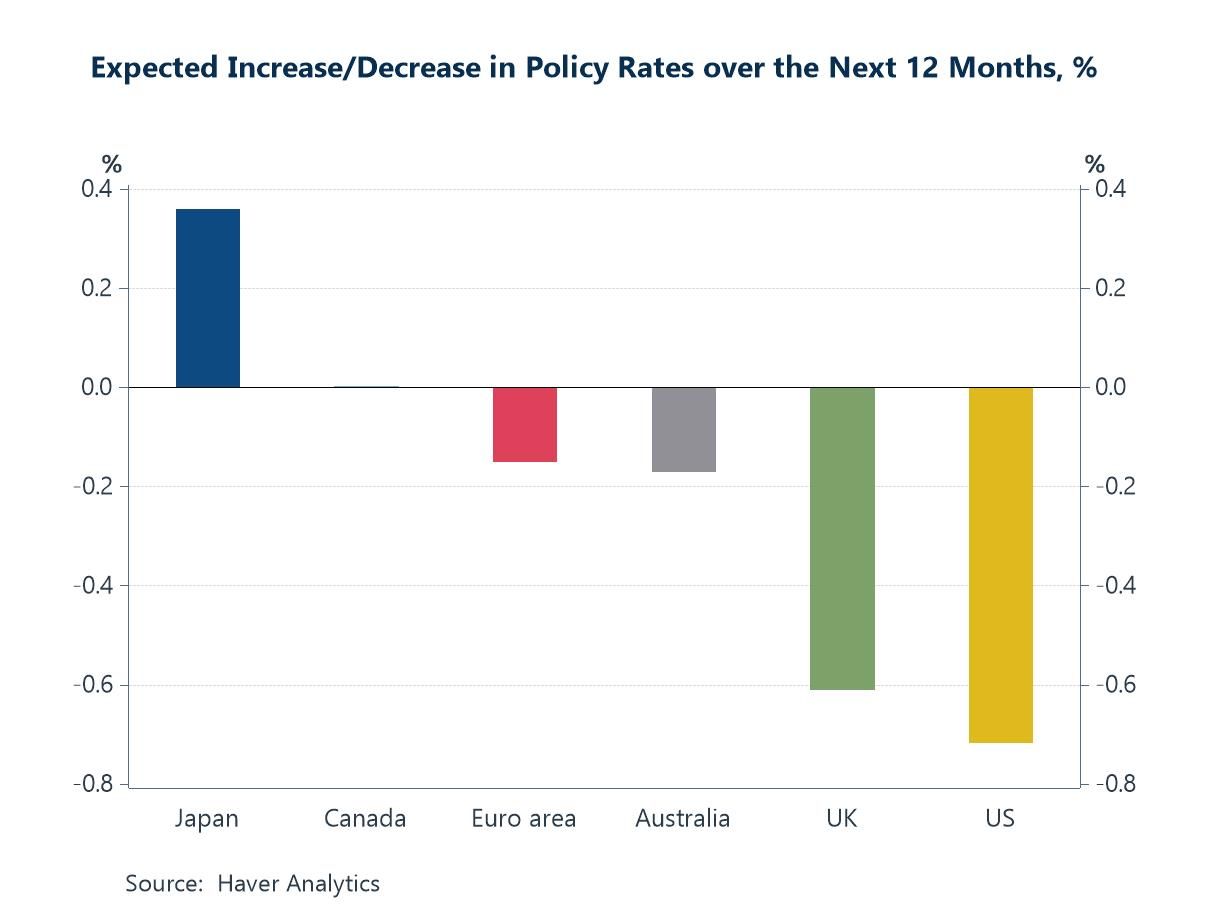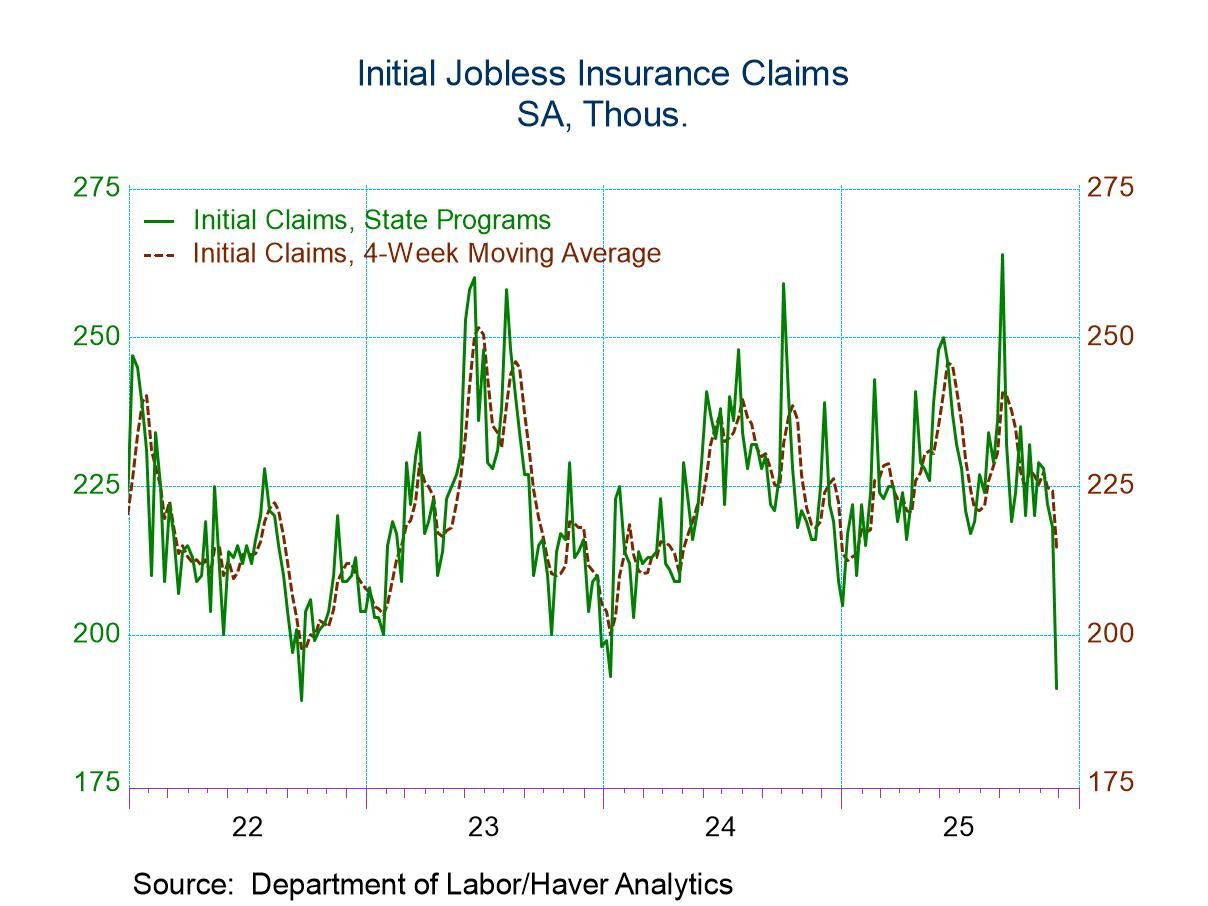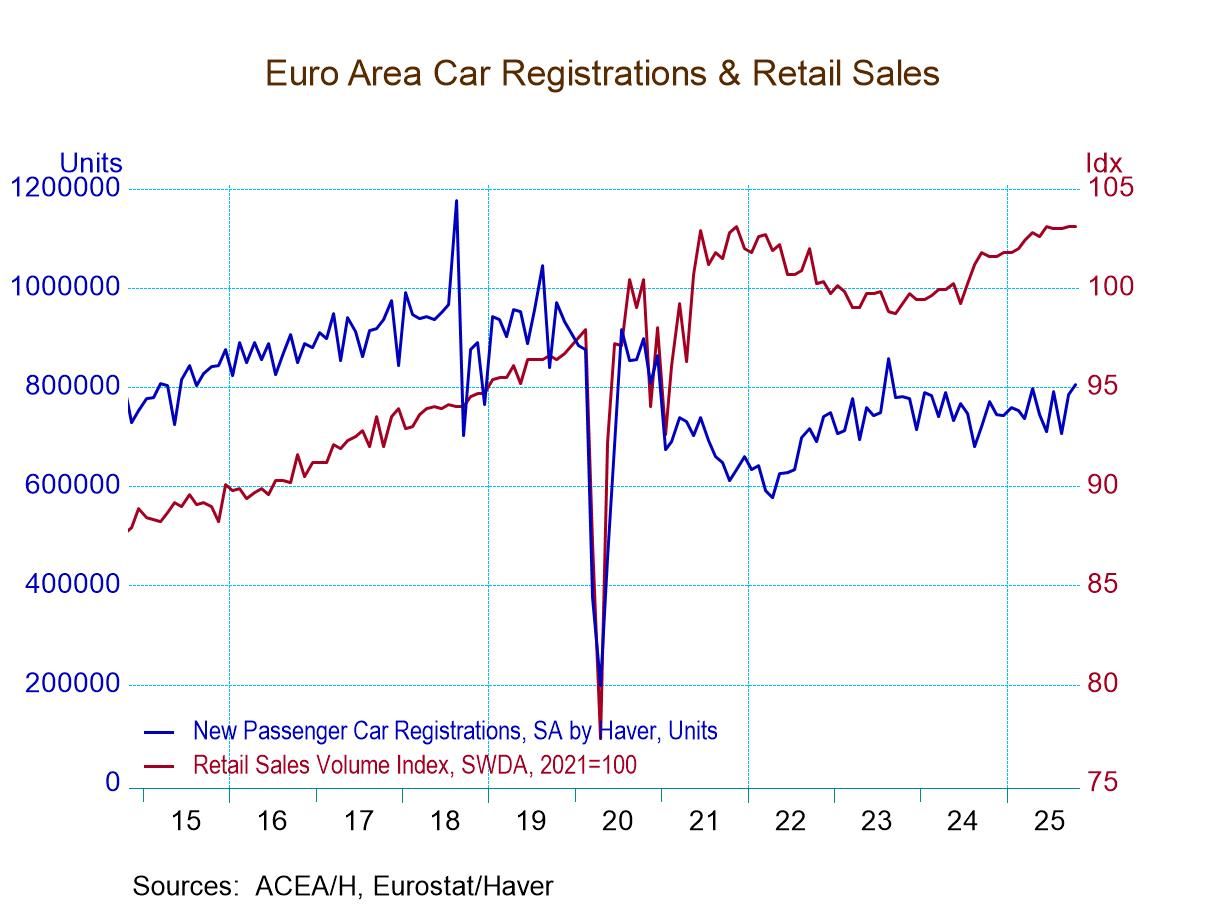Little Change Logged for Flash PMIs in May

The months readings are decidedly mixed. Four service sectors report stronger month-to-month and four weaker; manufacturing sectors report three weaker and five stronger. The composite headlines are split four-and-four.
Still, it’s not as if nothing is happening. On data back to January 2021, the average of the composite ranked in May has a 35-percentile standing – still below its median on the period. Services have slipped with a 28-percentile ranking well into the bottom one-third ranking position. Manufacturing has been rehabilitating despite the Russia-Ukraine war and the Trump tariffs, as the sector has an above median 60.4 ranking on its average reading.
On an individual country basis, the EMU, Germany, France, the United States, Australia, and India – all reporting countries except the United Kingdom and Japan show manufacturing PMI rank standings above their respective medians (above a ranking of 50%). But only Japan and India show service sectors with rankings above their respective medians and only India has a composite standing above its median on this timeline. And India is an exception with extremely high rankings across sectors.
The monthly average shows very little change from March to April to May. The composite and services readings get slightly weaker while manufacturing gets marginally stronger moving up from 49.9 in March to 50.5 in May- hardly a rocket shot. Similarly, there is little change from the 12- month to six-month to 3-month averages. Looking at 3-months to 12-months, the composite weakens from 51.6 to 51.2, manufacturing improves from 48.8 to 49.6 and services weaken from 52.4 to 51.3.
There is a great deal of grumbling about policy and U.S. tariff threats, but so far there is little evidence of impact. I’m sure there will be impact, but I am not as persuaded that ‘uncertainty’ ‘per se’ is the bogeyman everyone else wants to make it out to be. It can be an issue. But I expect Trump to resolve these issues so that the main impact I expect is the impact from the deals he makes.
In EMU, manufacturing is progressing, services regressing

In a separate paper, I just published on Seeking Alpha I included this table:

What we see here is that despite the importance of consumption in U.S. GDP, neither exports nor imports are high relative to GDP when we compare that to other countries. All this grousing by economists that excess U.S. consumption sucks in imports and worsens the U.S. current account seems to be baseless. Everybody imports more than the U.S. does (relative to GDP), and they export more too. It is the U.S. export measure, also relative-to-GDP, which is especially lame.
So, as we think about the impact of Trump tariffs, it’s important to keep perspective. I continue to argue that there is far too much focus on and hatred of Trump and far too much love of free trade, a condition that does not exist. What Trump has done, that is good, is to give the U.S. a date with destiny it can negotiate, rather than the one that will be thrust upon it by a debt crisis. Making trade fairer will make it freer. It should be lost on no one that global trade is dominated by the most repressive, intolerant, least-open, rule-violating country in the world. How does anyone square the notion of global ‘free trade’ with the success and dominance of China, a country that confiscated the South China Sea against the ruling of the world court?
What we are seeing is that world trade has been working out from COVID and the recoil from the Russian invasion of Ukraine. The U.S. actions on trade will push more military responsibility and spending on Europe in its new role in NATO. That should be stimulative. The tariffs are simply going to upset long standing apple carts that benefited from trade agreements and market practices that disadvantaged the U.S. and were allowed because the U.S. is a ‘rich’ country.
But that was then. With population slowing globally, the burden of debt is looking heavier and its need for redress is becoming more of a clear and present danger. The U.S. market is a huge prize. If the U.S. nominal current account deficit were a country, it would be the 19th largest country in the world. U.S. imports would be the fifth or sixth largest country in the world. This is what is at stake. This is driving a huge amount of global demand. Countries are very concerned about having diminished access to U.S. demand or access on less favorable terms, which is what tariffs propose to do. No wonder countries are trying to pick on the few things that U.S. imports from them that might be hard to replace and threaten to restrict access to those things. China, for example, is alleged to be holding back access to rare earth minerals essential for making batteries.
Against all of these factors and allegations, is that fact that it is manufacturing that is doing better in this survey and services that are doing worse. That certainly could change, but for now, that’s the story tariffs or not.
Robert Brusca
AuthorMore in Author Profile »Robert A. Brusca is Chief Economist of Fact and Opinion Economics, a consulting firm he founded in Manhattan. He has been an economist on Wall Street for over 25 years. He has visited central banking and large institutional clients in over 30 countries in his career as an economist. Mr. Brusca was a Divisional Research Chief at the Federal Reserve Bank of NY (Chief of the International Financial markets Division), a Fed Watcher at Irving Trust and Chief Economist at Nikko Securities International. He is widely quoted and appears in various media. Mr. Brusca holds an MA and Ph.D. in economics from Michigan State University and a BA in Economics from the University of Michigan. His research pursues his strong interests in non aligned policy economics as well as international economics. FAO Economics’ research targets investors to assist them in making better investment decisions in stocks, bonds and in a variety of international assets. The company does not manage money and has no conflicts in giving economic advice.




 Global
Global

